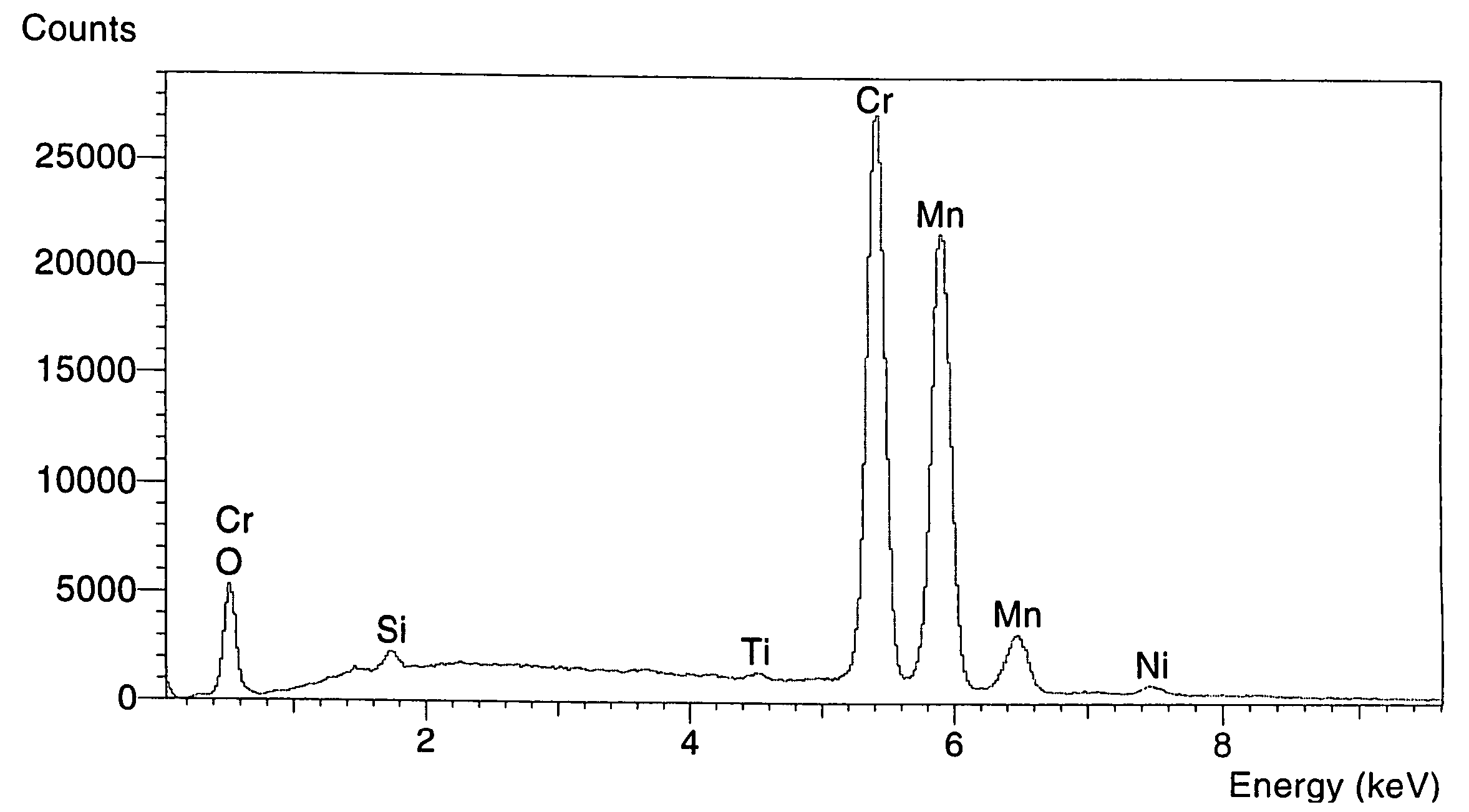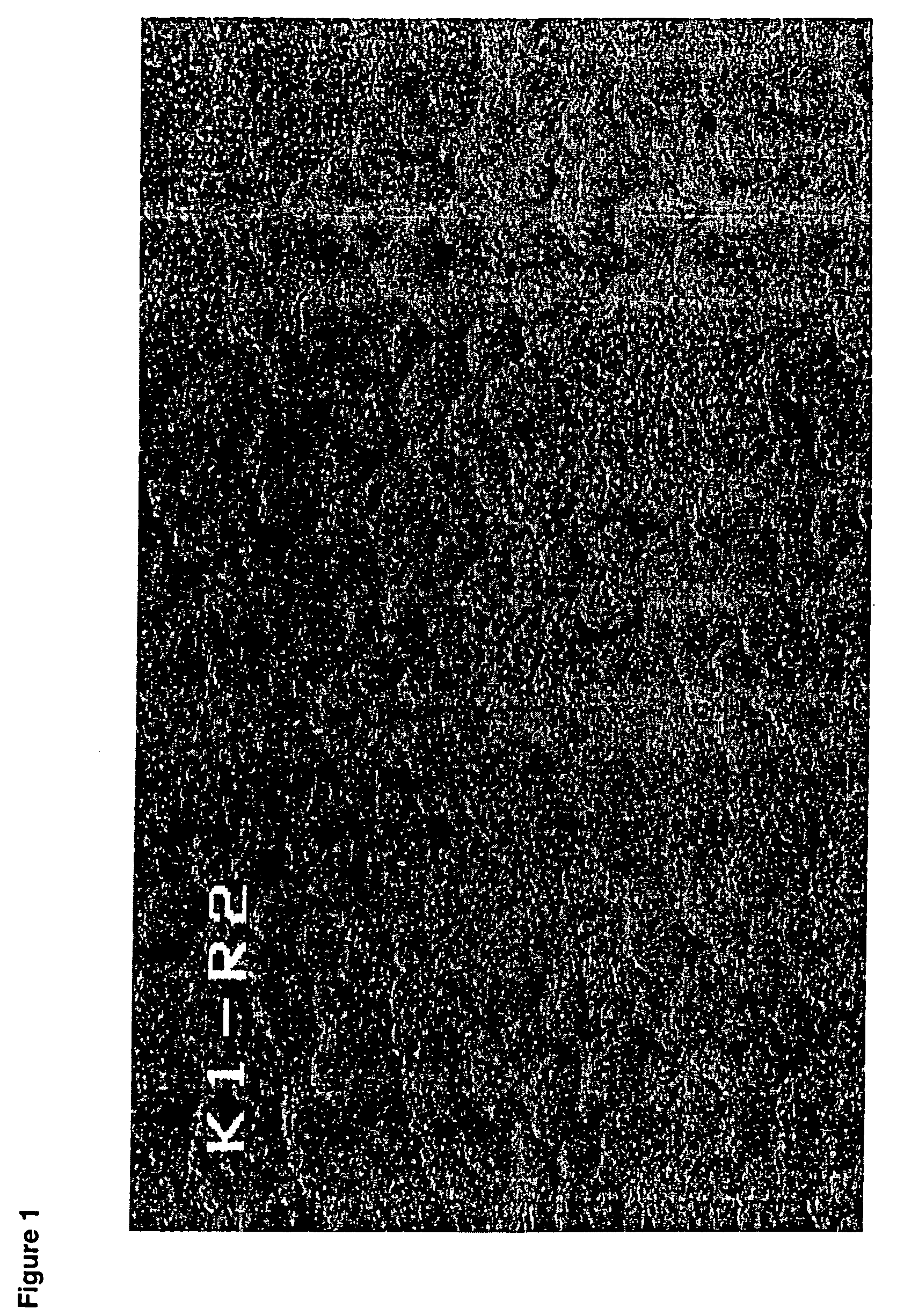Surface on a stainless steel matrix
a technology of stainless steel and surface, applied in the field of stainless steel, can solve the problems of reducing the coking resistance of steel tubes, reducing the ductility of steel tubes, and reducing the resistance to thermal fatigue, so as to achieve the effect of not damaging the surfa
- Summary
- Abstract
- Description
- Claims
- Application Information
AI Technical Summary
Benefits of technology
Problems solved by technology
Method used
Image
Examples
example 1
[0041]Sample Preparation: Sample preparation is from a commercially specified furnace tubes having a composition of the present invention with a bulk chromium content of about 33% (by weight) and manganese of about 1% (by weight). The sample was then heated in an oven up to 1000° C. in a reducing atmosphere and maintained at 1000° C. for about 16 hours in an atmosphere of a mixture of nitrogen and air, then cooled back down to room temperature.
[0042]Metallographic analysis of specimens was carried out by conventional techniques used for characterizing damage-sensitive oxide scales on steels as known to those versed in the art.
[0043]Surface structural and chemical analysis was carried out using Scanning Electron Microscopy equipped with light-element Energy Dispersive Spectroscopy (SEM / EDS, Hitachi S-2500), a high resolution field-emission SEM also with light element capability (FESEM-EDS, Hitachi S-4500), Scanning Auger Microprobe (SAM, PHI 600) and Time-of-Flight Secondary Ion Mass...
example 2
Sample Preparation: Coupons from the inlet and outlet of the commercially treated tube were used. Additionally, the same alloy was treated in a comparable manner using laboratory equipment.
[0045]FIG. 4 shows an EDS spectrum of the laboratory pretreated coupon. Table 1 shows the elemental concentration on the surface of treated alloy coupon or coils. The results in column two are from coupons that were cut out of a commercial tube and treated in the laboratory. Columns three and four show the results of the pretreated commercial coil of Example 1. The results show very good agreement in the capability of the process to increase the content of Mn and Cr on the surface tremendously and decrease nickel content significantly. Also, the content of iron was reduced to a level which was not detectable by the analytical tool that was used.
[0046]
TABLE 1EDS Results of Treated AlloyLaboratoryCommercial PlantCommercial PlantTreatmentTreatment ResultsTreatment ResultsElementResults(Coil Inlet)(Co...
example 3
[0047]Chromia (Cr2O3) powder (≧98% purity) was obtained from SIGMA-ALDRICH. The spinel MnCr2O4 powder was manufactured in-house to a purity of ≧98% and its structure confirmed by x-ray diffraction. X-ray Diffraction analysis was carried out using a Siemens D5000 unit with a Cu x-ray source using a 40 KV accelerating voltage and a current of 30 ma (shown as FIG. 5 for chromia). Crystal structure analysis and assignment was carried out using a Bruker DiffracPlus software package and a PDF-1 database.
[0048]Thermal stability analysis was carried out in a controlled atmosphere furnace in the temperature range of 950 to 1150° C. with temperature calibrated to ±2° C. and controlled to ±0.1° C. The atmosphere investigated was selected from conditions of vacuum (˜10−3 torr), or an argon (>99.999% purity) atmosphere, or an argon-5% hydrogen atmosphere, and maintaining a dynamic pressure of 200 mtorr, 1-2 torr or 800 torr. Run times for the study ranged from 4 hours to 300 hours. The condition...
PUM
| Property | Measurement | Unit |
|---|---|---|
| temperature | aaaaa | aaaaa |
| weight % | aaaaa | aaaaa |
| weight % | aaaaa | aaaaa |
Abstract
Description
Claims
Application Information
 Login to View More
Login to View More - R&D
- Intellectual Property
- Life Sciences
- Materials
- Tech Scout
- Unparalleled Data Quality
- Higher Quality Content
- 60% Fewer Hallucinations
Browse by: Latest US Patents, China's latest patents, Technical Efficacy Thesaurus, Application Domain, Technology Topic, Popular Technical Reports.
© 2025 PatSnap. All rights reserved.Legal|Privacy policy|Modern Slavery Act Transparency Statement|Sitemap|About US| Contact US: help@patsnap.com



